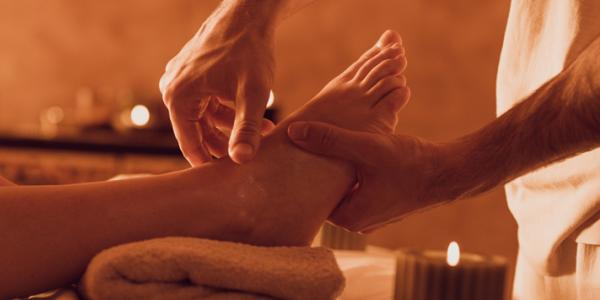
While most of us turn to western medicine when we are sick, traditional eastern practices can have a powerful impact on wellness.
Western healthcare practitioners are increasingly looking to complement modern evidence-based medicine with eastern integrative treatments. So how do you sort through the most popular eastern healing traditions? Read on for an overview.
Skip
Acupuncture
Ancient Chinese medicine promotes the concept that life energy (Qi, also spelled Chi) flows between the external body and the internal organs through 12 established pathways, or “meridians.” According to this tradition, disruptions in the flow of Qi can have a negative effect on your health. Acupuncture involves the insertion of super-fine needles into points on the body said to connect the surface of the skin with the internal organs. This virtually painless procedure is believed to balance Yin and Yang in the body by stimulating and regulating the flow of Qi. Acupuncture is used to relieve pain and promote a sense of well being and relaxation.
Acupressure
Used to release tension, promote blood circulation and regulate the flow of Qi, acupressure uses physical pressure instead of needles to stimulate the acupuncture points and meridians on your body.
Jin Shin Jyutsu®
Similar to acupressure, the Japanese healing art of Jin Shin Jyutsu® (JSJ) uses gentle touch to restore and balance the flow of energy. JSJ focuses on 26 sets of key “safety energy locks.” In a typical session, you lie fully clothed, face-up on a cushioned surface while the practitioner uses a series of hand placement combinations on the safety energy locks to release blocked energy. JSJ may reduce stress, promote relaxation and boost the body’s healing capacity. It can also be used to control nausea and anxiety in patients undergoing chemotherapy treatment.
Reflexology
The theory behind this healing art is that different areas of the foot correspond to different organs and systems in the body. By applying pressure to a specific area on your foot, the reflexologist brings healing and relaxation to a corresponding area of your body. As with any kind of bodywork, reflexology may help calm the central nervous system. Several studies have shown that reflexology promotes relaxation and helps reduce pain, stress and anxiety.
Tai Chi and Qigong
Often viewed as a form of “moving meditation,” Tai Chi involves a series of slow, fluid, continuous movements. The low-impact exercises used for this ancient Chinese practice are intended to enhance qi and circulate it throughout your body. Tai Chi’s gentle exercises make it accessible to the elderly, the wheelchair bound and people who are recovering from surgery. While not a strenuous workout, Tai Chi helps build muscle strength, flexibility and balance and also has minor aerobic benefits.
Qi Gong can be practiced sitting, standing or even lying down. It involves flowing movement, meditation and deep rhythmic breathing and cultivates mindfulness and calm.
Yoga
Yoga was developed several thousand years ago in India as a system to promote physical, mental, emotional and spiritual well being. Although we tend to think of yoga as mostly a form of exercise, there are a wide variety of yoga practices, including chant, meditation, breathing exercises and repeating spiritual phrases (called mantras). Any yoga class you take will be grounded in Hatha yoga, an umbrella term that covers all the physical poses performed in yoga class. However, there are different schools of yoga and you may want to shop around to find the studio that fits your goals and fitness level. Yoga can help build strength and flexibility, improve balance and reduce stress.
This article first appeared in the November 2019 edition of the HealthPerks newsletter.

